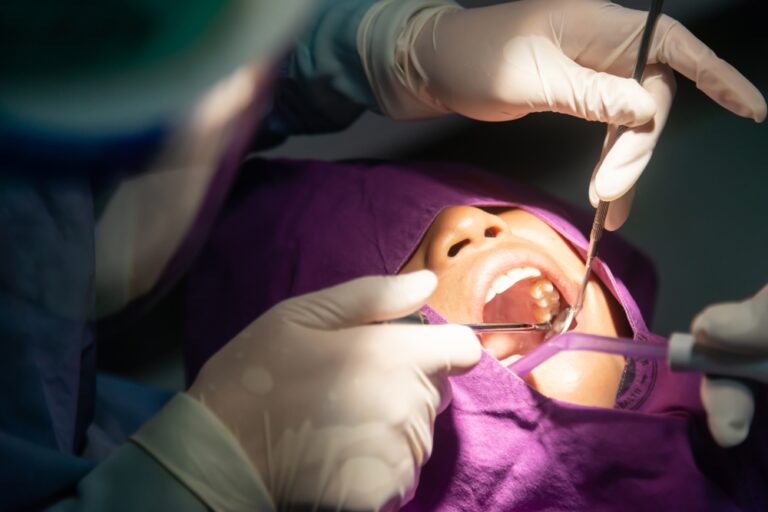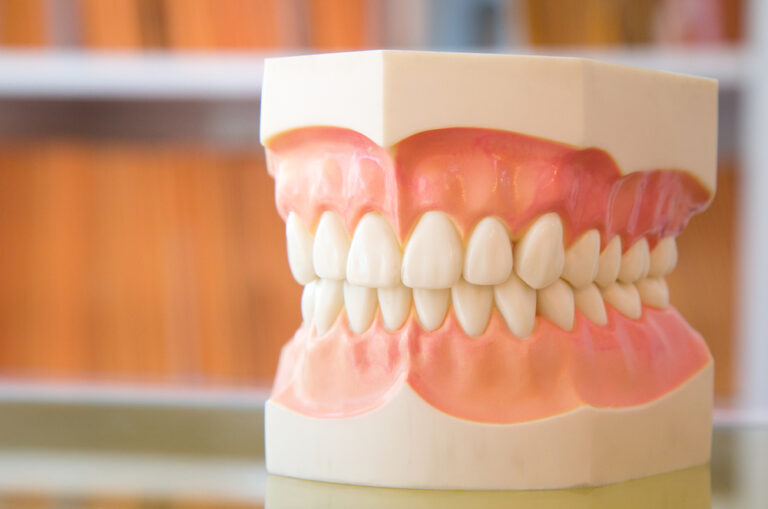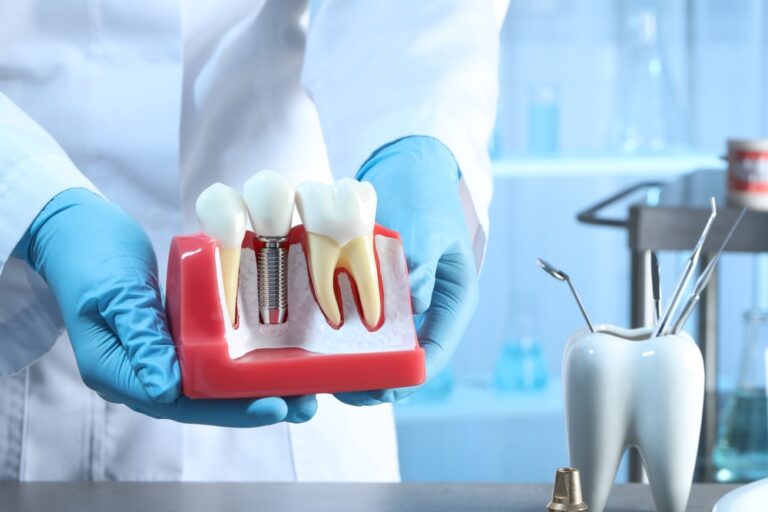Smiling is a universal language that transcends cultures and languages. It is a nonverbal communication that can convey a range of emotions from happiness to friendliness to flirtation. But why do some people show more teeth when they smile than others? The answer lies in a combination of factors, including anatomy, psychology, genetics, and health.
Anatomy plays a significant role in how much teeth a person shows when they smile. The muscles around the mouth and lips determine the angle and width of the smile. The shape and size of the teeth also affect the appearance of the smile. Additionally, the position of the upper lip relative to the teeth can influence how much gum is visible when a person smiles.
Psychology also plays a role in how much teeth a person shows when they smile. People tend to smile more when they are happy or in a positive mood. The context of the situation can also affect the type of smile a person displays. For example, a polite smile might be more restrained than a genuine smile of joy.
Key Takeaways
- The anatomy of a smile, including the muscles around the mouth and lips, the shape and size of the teeth, and the position of the upper lip relative to the teeth, can affect how much teeth a person shows when they smile.
- Psychology also plays a role in how much teeth a person shows when they smile, with people tending to smile more when they are happy or in a positive mood.
- A person’s genetics and health can also influence the appearance of their smile.
Anatomy of a Smile

Muscles Involved
Smiling is a complex process that involves several muscles in the face. The main muscles involved in smiling are the zygomaticus major and the orbicularis oculi. The zygomaticus major muscle is responsible for pulling the corners of the mouth upwards, while the orbicularis oculi muscle is responsible for raising the cheeks and creating crow’s feet around the eyes. These muscles work together to create a genuine smile.
Role of Teeth
Teeth play an important role in the aesthetics of a smile. The size, shape, and alignment of the teeth can all affect how much of the teeth are visible when a person smiles. In an ideal smile, the upper teeth should be visible, and no more than 2 mm of gums should show above the teeth. This is because more than 2 mm of gums can create a “gummy” smile, which is less aesthetically pleasing.
The lips also play a crucial role in the aesthetics of a smile. The lips frame the teeth and gums, and enhancing or correcting the shape, fullness, and symmetry of the lips can make a smile appear fuller. For optimal esthetics, the facial features should line up with the teeth and lip lines.
In conclusion, the anatomy of a smile is a complex process that involves several muscles in the face and the aesthetics of the teeth and lips. Understanding the anatomy of a smile can help dentists create beautiful and natural-looking smiles for their patients.
Psychology Behind Smiling
Expression of Emotions
Smiling is a universal expression of positive emotion. It is often associated with happiness, joy, and contentment. However, people also smile to express other emotions, such as nervousness, embarrassment, and even anger. The Duchenne smile, which involves the contraction of both the zygomatic major muscle and the orbicularis oculi muscle, is considered the most genuine and sincere smile.
Studies have shown that smiling can have a positive impact on our mood and overall well-being. When we smile, our brain releases endorphins, which are natural painkillers and mood enhancers. Smiling can also reduce stress and anxiety levels, lower blood pressure, and improve immune function.
Social Interactions
Smiling is not only an expression of emotion but also an important social cue. It can convey friendliness, approachability, and trustworthiness. Smiling can also be contagious, triggering a positive response in others and promoting social bonding.
Research has shown that people who smile more are perceived as more attractive, likeable, and competent. In a study conducted by the American Psychological Association, participants who smiled more in their yearbook photos were more likely to have successful marriages and greater life satisfaction later in life.
In conclusion, smiling is a powerful tool that can improve our mood, health, and social interactions. Whether we are expressing happiness or trying to put others at ease, a genuine smile can go a long way in creating positive experiences and relationships.
Variations in Smiles

Duchenne vs Non-Duchenne
There are two main types of smiles: Duchenne and Non-Duchenne. Duchenne smiles are genuine and involve the contraction of both the zygomatic major muscle (which raises the corners of the mouth) and the orbicularis oculi muscle (which raises the cheeks and creates crow’s feet around the eyes). Non-Duchenne smiles, on the other hand, involve only the zygomatic major muscle and are often used to conceal negative emotions.
Duchenne smiles are often seen as more attractive and trustworthy, as they are associated with genuine positive emotions. Non-Duchenne smiles, on the other hand, can be perceived as insincere or fake.
Cultural Differences
Cultural differences can also play a role in variations in smiles. For example, in some cultures, it is considered impolite to show teeth when smiling, while in others, a big toothy grin is seen as a sign of happiness and friendliness.
Additionally, some cultures place a greater emphasis on smiling as a form of social interaction. In these cultures, people may smile more frequently and for longer periods of time than in cultures where smiling is less important.
Overall, the way people smile can vary based on a variety of factors, including cultural background, personal preferences, and emotional state. Regardless of the type of smile, however, it is an important part of social interaction and communication.
Genetics and Smiling
Inherited Traits
The way people smile is often determined by genetics. Some people naturally show more teeth when they smile than others. This is because the size and shape of our teeth, lips, and jaw are inherited traits. For example, if someone’s parents have large teeth and a wide smile, it is likely that they will also have these features.
Genes Impacting Facial Structure
Genes also play a role in determining the structure of our face, including the shape of our jaw and the size of our cheekbones. These factors can impact how much teeth are visible when we smile. For example, someone with a wider jaw may naturally show more teeth when they smile than someone with a narrower jaw.
It is important to note that while genetics can influence our smiles, other factors such as muscle movement and personal habits also play a role. Some people may consciously or unconsciously adjust their smile to show more or less teeth based on their personal preferences or social norms.
Overall, genetics can impact the way we smile, but it is not the only factor. The way we smile is a complex interplay of inherited traits, muscle movement, and personal habits.
Health and Smiling

Oral Health
Maintaining good oral health is important not only for the health of our teeth and gums but also for our overall well-being. Poor oral hygiene can lead to various dental problems such as cavities, gum disease, and bad breath, which can affect our ability to smile confidently. Regular brushing, flossing, and dental check-ups can help prevent these problems and promote a healthy smile.
In addition, certain dental procedures such as teeth whitening and veneers can improve the appearance of our teeth and enhance our smile. However, it is important to consult with a dental professional before undergoing any cosmetic treatment to ensure it is safe and appropriate for your specific needs.
Psychological Well-being
Smiling not only has physical health benefits but also psychological benefits. Research has shown that smiling can improve our mood, reduce stress, and increase feelings of happiness and well-being. A genuine smile can also help us connect with others and create positive social interactions.
However, some people may feel self-conscious about their smile due to dental problems or other factors such as crooked teeth or a gummy smile. This can lead to feelings of embarrassment or low self-esteem, which can affect their ability to smile confidently. Seeking professional dental treatment or orthodontic care can help address these concerns and improve one’s confidence and overall well-being.
In conclusion, maintaining good oral health and seeking professional dental care can help promote a healthy and confident smile, which can have both physical and psychological benefits.
Frequently Asked Questions
How many teeth should show when you smile?
There is no set number of teeth that should show when you smile. However, a natural and attractive smile usually shows the top row of teeth and a small amount of the bottom row. It’s important to note that everyone’s smile is unique, and what looks good on one person may not look good on another.
How to fix lack of tooth display?
If you’re unhappy with the amount of teeth that show when you smile, there are a few options to consider. One option is to undergo orthodontic treatment to correct any misaligned teeth. Another option is to have cosmetic dentistry procedures such as veneers or bonding to improve the appearance of your teeth.
Why do some people show so much teeth?
The amount of teeth that show when a person smiles can depend on a variety of factors such as facial structure, lip shape, and personal preference. Some people may naturally have a wider smile that shows more teeth, while others may intentionally show more teeth to create a more attractive smile.
Are you supposed to show your teeth when you smile?
There is no right or wrong way to smile, and whether or not you show your teeth is a personal preference. However, a natural and genuine smile usually involves some tooth display.
Why do my bottom teeth show when I talk?
When you talk, your lips and facial muscles move in different ways than when you smile. This can cause your bottom teeth to show more than your top teeth. If you’re concerned about the amount of teeth that show when you talk, it’s best to consult with a dental professional.
Why do some people’s teeth not show when they smile?
There are a few reasons why a person’s teeth may not show when they smile. This can be due to factors such as the length of the teeth, mobility of the lips, or retroclined teeth. Aging can also cause changes in the mouth and facial structure that affect tooth display. If you’re concerned about your smile, it’s best to consult with a dental professional to determine the cause and explore treatment options.






